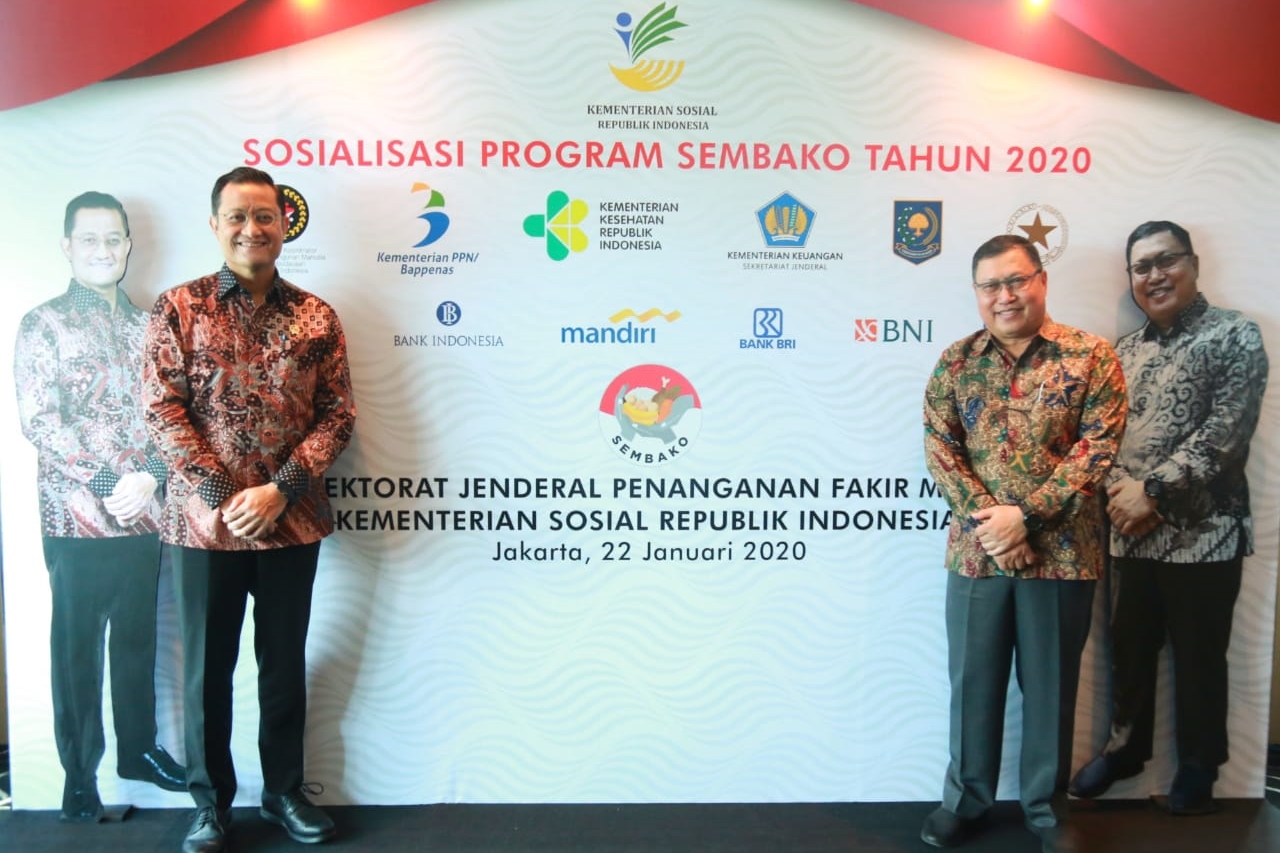Basic Food Program Expected to be Able to Reduce Poverty Rate Below 9%

JAKARTA (January 22, 2020)
- Starting in 2020, the government is transforming Non-Cash Food Assistance
(BPNT) into a Basic Food Program. According to the Minister of Social Affairs
Juliari P. Batubara, the Basic Food Program is expected to reduce the poverty
rate to below 9%.
Citing a survey by the
Central Statistics Agency (BPS) in March 2019, the poverty rate in Indonesia
was recorded at 9.41%. As for the latest BPS survey, namely September 2019, the
poverty rate became 9.22%.
"According to BPS,
there is a role for BPNT in reducing the poverty rate. Therefore, with the
basic food program, it is hoped that the poverty rate will continue to decline.
The government's target is below 9% by 2020, "said Juliari in the
Socialization Activity for the Basic Food Program in Jakarta, Wednesday
(22/1/2020).
In the Basic Food Program,
the assistance index is increased from Rp110,000 / Beneficiary Family (KPM) to
Rp150,000. Then the food is added, besides rice and eggs, chicken, fish and
vegetables (especially beans) are also added.
According to Juliari, the
launch of the Basic Food Program is also inseparable from the government's
efforts to improve the quality of public nutrition, especially to reduce the
high stunting rate in Indonesia. "So that the Ministry of Social Affairs
is seen to be able to contribute to the stunting management program," said
Juliari.
The mechanism for
channelling assistance, according to Juliari, still uses the BPNT mechanism.
Namely distributed non-cash through the Welfare Family Card (KKS) to designated
e-warong. "Still using the old card (KKS). So as of today, we haven't
procured any new cards. We are still using KKS, "said Juliari.
To keep improving and
supporting the quality of the basic food program services, Juliari asked State-owned
Bank Association (Himbara) to increase the number of e-warongs. This is because
he sees that the e-warong ratio is still less than the number of KPM.
"The Himbara's are in
direct contact with e-warong. I asked them to increase the number of e-warongs.
Because I heard that there is an e-warong that handles one sub-district, for
example. It's too broad, "he said.
On the same occasion, the Director
General of Poverty Handling Andi ZA Dulung stated, with the increase in the assistance
index and the addition of these types of food, it is hoped that KPM
expenditures can be reduced and they become more independent.
"The increase (in assistance
index) is not only aimed at reducing their expenditure, another goal is to form
them to be more independent," said Andi in an interview on a television
station.
Another objective of the
Basic Food Program is to provide KPM with more balanced nutrition; improve
accuracy of targeting, time, quantity, price, quality, and administration; and
provide choice and control to KPM in meeting food needs.
"With the Basic Food
Program, it is hoped that the food security at the KPM level will increase as
well as a mechanism for social protection and poverty reduction," said
Andi.
Also, to increase the
efficiency of social assistance distribution; to increase public access to
financial and banking services; to increase in non-cash transactions in the
agenda of the Non-cash National Movement (GNNT); and to increase economic
growth in the regions, especially micro and small enterprises in the trade
sector.
Public Relations Bureau
Ministry of Social Affairs
 English
English
 Bahasa
Bahasa
